RBS 2011 Annual Report Download - page 325
Download and view the complete annual report
Please find page 325 of the 2011 RBS annual report below. You can navigate through the pages in the report by either clicking on the pages listed below, or by using the keyword search tool below to find specific information within the annual report.-
 1
1 -
 2
2 -
 3
3 -
 4
4 -
 5
5 -
 6
6 -
 7
7 -
 8
8 -
 9
9 -
 10
10 -
 11
11 -
 12
12 -
 13
13 -
 14
14 -
 15
15 -
 16
16 -
 17
17 -
 18
18 -
 19
19 -
 20
20 -
 21
21 -
 22
22 -
 23
23 -
 24
24 -
 25
25 -
 26
26 -
 27
27 -
 28
28 -
 29
29 -
 30
30 -
 31
31 -
 32
32 -
 33
33 -
 34
34 -
 35
35 -
 36
36 -
 37
37 -
 38
38 -
 39
39 -
 40
40 -
 41
41 -
 42
42 -
 43
43 -
 44
44 -
 45
45 -
 46
46 -
 47
47 -
 48
48 -
 49
49 -
 50
50 -
 51
51 -
 52
52 -
 53
53 -
 54
54 -
 55
55 -
 56
56 -
 57
57 -
 58
58 -
 59
59 -
 60
60 -
 61
61 -
 62
62 -
 63
63 -
 64
64 -
 65
65 -
 66
66 -
 67
67 -
 68
68 -
 69
69 -
 70
70 -
 71
71 -
 72
72 -
 73
73 -
 74
74 -
 75
75 -
 76
76 -
 77
77 -
 78
78 -
 79
79 -
 80
80 -
 81
81 -
 82
82 -
 83
83 -
 84
84 -
 85
85 -
 86
86 -
 87
87 -
 88
88 -
 89
89 -
 90
90 -
 91
91 -
 92
92 -
 93
93 -
 94
94 -
 95
95 -
 96
96 -
 97
97 -
 98
98 -
 99
99 -
 100
100 -
 101
101 -
 102
102 -
 103
103 -
 104
104 -
 105
105 -
 106
106 -
 107
107 -
 108
108 -
 109
109 -
 110
110 -
 111
111 -
 112
112 -
 113
113 -
 114
114 -
 115
115 -
 116
116 -
 117
117 -
 118
118 -
 119
119 -
 120
120 -
 121
121 -
 122
122 -
 123
123 -
 124
124 -
 125
125 -
 126
126 -
 127
127 -
 128
128 -
 129
129 -
 130
130 -
 131
131 -
 132
132 -
 133
133 -
 134
134 -
 135
135 -
 136
136 -
 137
137 -
 138
138 -
 139
139 -
 140
140 -
 141
141 -
 142
142 -
 143
143 -
 144
144 -
 145
145 -
 146
146 -
 147
147 -
 148
148 -
 149
149 -
 150
150 -
 151
151 -
 152
152 -
 153
153 -
 154
154 -
 155
155 -
 156
156 -
 157
157 -
 158
158 -
 159
159 -
 160
160 -
 161
161 -
 162
162 -
 163
163 -
 164
164 -
 165
165 -
 166
166 -
 167
167 -
 168
168 -
 169
169 -
 170
170 -
 171
171 -
 172
172 -
 173
173 -
 174
174 -
 175
175 -
 176
176 -
 177
177 -
 178
178 -
 179
179 -
 180
180 -
 181
181 -
 182
182 -
 183
183 -
 184
184 -
 185
185 -
 186
186 -
 187
187 -
 188
188 -
 189
189 -
 190
190 -
 191
191 -
 192
192 -
 193
193 -
 194
194 -
 195
195 -
 196
196 -
 197
197 -
 198
198 -
 199
199 -
 200
200 -
 201
201 -
 202
202 -
 203
203 -
 204
204 -
 205
205 -
 206
206 -
 207
207 -
 208
208 -
 209
209 -
 210
210 -
 211
211 -
 212
212 -
 213
213 -
 214
214 -
 215
215 -
 216
216 -
 217
217 -
 218
218 -
 219
219 -
 220
220 -
 221
221 -
 222
222 -
 223
223 -
 224
224 -
 225
225 -
 226
226 -
 227
227 -
 228
228 -
 229
229 -
 230
230 -
 231
231 -
 232
232 -
 233
233 -
 234
234 -
 235
235 -
 236
236 -
 237
237 -
 238
238 -
 239
239 -
 240
240 -
 241
241 -
 242
242 -
 243
243 -
 244
244 -
 245
245 -
 246
246 -
 247
247 -
 248
248 -
 249
249 -
 250
250 -
 251
251 -
 252
252 -
 253
253 -
 254
254 -
 255
255 -
 256
256 -
 257
257 -
 258
258 -
 259
259 -
 260
260 -
 261
261 -
 262
262 -
 263
263 -
 264
264 -
 265
265 -
 266
266 -
 267
267 -
 268
268 -
 269
269 -
 270
270 -
 271
271 -
 272
272 -
 273
273 -
 274
274 -
 275
275 -
 276
276 -
 277
277 -
 278
278 -
 279
279 -
 280
280 -
 281
281 -
 282
282 -
 283
283 -
 284
284 -
 285
285 -
 286
286 -
 287
287 -
 288
288 -
 289
289 -
 290
290 -
 291
291 -
 292
292 -
 293
293 -
 294
294 -
 295
295 -
 296
296 -
 297
297 -
 298
298 -
 299
299 -
 300
300 -
 301
301 -
 302
302 -
 303
303 -
 304
304 -
 305
305 -
 306
306 -
 307
307 -
 308
308 -
 309
309 -
 310
310 -
 311
311 -
 312
312 -
 313
313 -
 314
314 -
 315
315 -
 316
316 -
 317
317 -
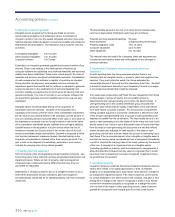 318
318 -
 319
319 -
 320
320 -
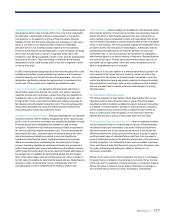 321
321 -
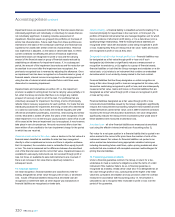 322
322 -
 323
323 -
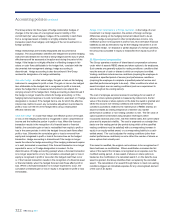 324
324 -
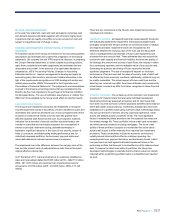 325
325 -
 326
326 -
 327
327 -
 328
328 -
 329
329 -
 330
330 -
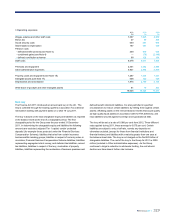 331
331 -
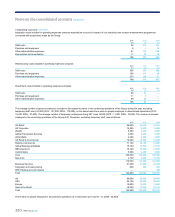 332
332 -
 333
333 -
 334
334 -
 335
335 -
 336
336 -
 337
337 -
 338
338 -
 339
339 -
 340
340 -
 341
341 -
 342
342 -
 343
343 -
 344
344 -
 345
345 -
 346
346 -
 347
347 -
 348
348 -
 349
349 -
 350
350 -
 351
351 -
 352
352 -
 353
353 -
 354
354 -
 355
355 -
 356
356 -
 357
357 -
 358
358 -
 359
359 -
 360
360 -
 361
361 -
 362
362 -
 363
363 -
 364
364 -
 365
365 -
 366
366 -
 367
367 -
 368
368 -
 369
369 -
 370
370 -
 371
371 -
 372
372 -
 373
373 -
 374
374 -
 375
375 -
 376
376 -
 377
377 -
 378
378 -
 379
379 -
 380
380 -
 381
381 -
 382
382 -
 383
383 -
 384
384 -
 385
385 -
 386
386 -
 387
387 -
 388
388 -
 389
389 -
 390
390 -
 391
391 -
 392
392 -
 393
393 -
 394
394 -
 395
395 -
 396
396 -
 397
397 -
 398
398 -
 399
399 -
 400
400 -
 401
401 -
 402
402 -
 403
403 -
 404
404 -
 405
405 -
 406
406 -
 407
407 -
 408
408 -
 409
409 -
 410
410 -
 411
411 -
 412
412 -
 413
413 -
 414
414 -
 415
415 -
 416
416 -
 417
417 -
 418
418 -
 419
419 -
 420
420 -
 421
421 -
 422
422 -
 423
423 -
 424
424 -
 425
425 -
 426
426 -
 427
427 -
 428
428 -
 429
429 -
 430
430 -
 431
431 -
 432
432 -
 433
433 -
 434
434 -
 435
435 -
 436
436 -
 437
437 -
 438
438 -
 439
439 -
 440
440 -
 441
441 -
 442
442 -
 443
443 -
 444
444 -
 445
445 -
 446
446 -
 447
447 -
 448
448 -
 449
449 -
 450
450 -
 451
451 -
 452
452 -
 453
453 -
 454
454 -
 455
455 -
 456
456 -
 457
457 -
 458
458 -
 459
459 -
 460
460 -
 461
461 -
 462
462 -
 463
463 -
 464
464 -
 465
465 -
 466
466 -
 467
467 -
 468
468 -
 469
469 -
 470
470 -
 471
471 -
 472
472 -
 473
473 -
 474
474 -
 475
475 -
 476
476 -
 477
477 -
 478
478 -
 479
479 -
 480
480 -
 481
481 -
 482
482 -
 483
483 -
 484
484 -
 485
485 -
 486
486 -
 487
487 -
 488
488 -
 489
489 -
 490
490
 |
 |

RBS Group 2011 323
26. Cash and cash equivalents
In the cash flow statement, cash and cash equivalents comprises cash
and demand deposits with banks together with short-term highly liquid
investments that are readily convertible to known amounts of cash and
subject to insignificant risk of change in value.
Critical accounting policies and key sources of estimation
uncertainty
The reported results of the Group are sensitive to the accounting policies,
assumptions and estimates that underlie the preparation of its financial
statements. UK company law and IFRS require the directors, in preparing
the Group's financial statements, to select suitable accounting policies,
apply them consistently and make judgements and estimates that are
reasonable and prudent. In the absence of an applicable standard or
interpretation, IAS 8 ‘Accounting Policies, Changes in Accounting
Estimates and Errors’, requires management to develop and apply an
accounting policy that results in relevant and reliable information in the
light of the requirements and guidance in IFRS dealing with similar and
related issues and the IASB's ‘Framework for the Preparation and
Presentation of Financial Statements’. The judgements and assumptions
involved in the Group's accounting policies that are considered by the
Board to be the most important to the portrayal of its financial condition
are discussed below. The use of estimates, assumptions or models that
differ from those adopted by the Group would affect its reported results.
Loan impairment provisions
The Group's loan impairment provisions are established to recognise
incurred impairment losses in its portfolio of loans classified as loans and
receivables and carried at amortised cost. A loan is impaired when there
is objective evidence that events since the loan was granted have
affected expected cash flows from the loan. Such objective evidence,
indicative that a borrower’s financial condition has deteriorated, can
include for loans that are individually assessed: the non-payment of
interest or principal; debt restructuring; probable bankruptcy or
liquidation; significant reduction in the value of any security; breach of
limits or covenants; and deteriorating trading performance and, for
collectively assessed portfolios: the borrowers’ payment status and
observable data about relevant macroeconomic measures.
The impairment loss is the difference between the carrying value of the
loan and the present value of estimated future cash flows at the loan's
original effective interest rate.
At 31 December 2011, loans and advances to customers classified as
loans and receivables totalled £427,805 million (2010 - £482,710 million;
2009 - £671,037 million) and customer loan impairment provisions
amounted to £19,760 million (2010 - £18,055 million; 2009 - £17,126
million).
There are two components to the Group's loan impairment provisions:
individual and collective.
Individual component - all impaired loans that exceed specific thresholds
are individually assessed for impairment. Individually assessed loans
principally comprise the Group's portfolio of commercial loans to medium
and large businesses. Impairment losses are recognised as the
difference between the carrying value of the loan and the discounted
value of management's best estimate of future cash repayments and
proceeds from any security held. These estimates take into account the
customer's debt capacity and financial flexibility; the level and quality of
its earnings; the amount and sources of cash flows; the industry in which
the counterparty operates; and the realisable value of any security held.
Estimating the quantum and timing of future recoveries involves
significant judgement. The size of receipts will depend on the future
performance of the borrower and the value of security, both of which will
be affected by future economic conditions; additionally, collateral may not
be readily marketable. The actual amount of future cash flows and the
date they are received may differ from these estimates and consequently
actual losses incurred may differ from those recognised in these financial
statements.
Collective component - this is made up of two elements: loan impairment
provisions for impaired loans that are below individual assessment
thresholds (collectively assessed provisions) and for loan losses that
have been incurred but have not been separately identified at the balance
sheet date (latent loss provisions). Collectively assessed provisions are
established on a portfolio basis using a present value methodology taking
into account the level of arrears, security, past loss experience, credit
scores and defaults based on portfolio trends. The most significant
factors in establishing these provisions are the expected loss rates and
the related average life. These portfolios include credit card receivables
and other personal advances including mortgages. The future credit
quality of these portfolios is subject to uncertainties that could cause
actual credit losses to differ materially from reported loan impairment
provisions. These uncertainties include the economic environment,
notablyinterest rates and their effect on customer spending, the
unemployment level, payment behaviour and bankruptcy trends. Latent
loss provisions are held against estimated impairment losses in the
performing portfolio that have yet to be identified as at the balance sheet
date. To assess the latent loss within its portfolios, the Group has
developed methodologies to estimate the time that an asset can remain
impaired within a performing portfolio before it is identified and reported
as such.
